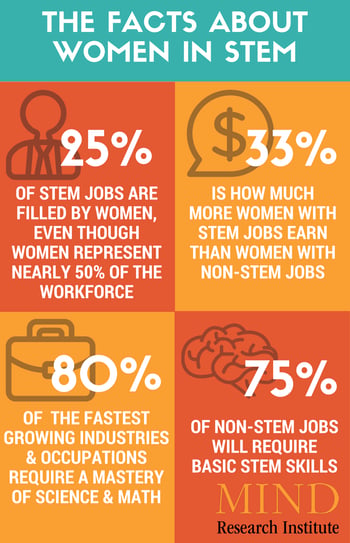
Last year I wrote a blog about why STEM needs a Title IX-like revolution. In essence, I shared my own empowering experiences as a college athlete to highlight the economic impact Title IX has had for hundreds of thousands of young women, as highlighted by this National Bureau of Economic Statistics study.
A lot has happened since then, including awesome experiences and aggravating events, which have made me even more passionate about supporting the Girls in STEM movement. A strategic and collaborative approach to increasing early access and success for girls in STEM can do for women what Title IX accomplished: opening doors for women in fields traditionally dominated by men. My first IX reasons haven’t disappeared, so here are IX more reasons why STEM needs a Title IX revolution:
1. I just spent 3 amazing weeks adventuring throughout Europe and discussing US and global STEM gender inequity issues with this rock star Mechanical Engineer (my awesome niece, who was also a college athlete):

2. Aside from a much needed vacation, our trip was inspired by this Facebook post Cassandra wrote on 8/20/15:
|
“So I just got home from the most amazing meeting. It was a technology development strategy meeting between my company and a key customer of ours. And in that very technical meeting of leaders were 8 men and 7 women. Seriously... 7 women!!! To all my fellow technical women friends - it was exactly the dreamlike wonder that you would imagine it to be. Everyone was engaged and every one of those women was confident, thoughtful, strong, knowledgeable and best of all respected and listened to. It was a fantastic meeting of shared ideas, strong opinions and negotiations where no one was silenced or belittled, male or female. I feel like today I rode a unicorn and it was glorious...” |
3. Did I mention this “dreamlike wonder” meeting was in 2015?
You might think this post is exaggerating the state of women in engineering and technology, but check out these basic stats:
 |
| Sources: U.S. Department of Commerce Economics and Statistics Administration, Bureau of Labor Statistics, Georgetown University |
4. And filed under ‘aggravating’ as mentioned earlier, this event, highlighted in a November, 2015 Orlando Sentinel article, is precisely why the ‘unicorn’ meeting she describes remains so rare: “School's boys-only science night prompts protest.” Sure, the school downplayed this by stating it was a PTA sponsored event and girls weren’t banned (just not invited). So, why does that matter?
5. In Chris Weller’s recent Business Insider article, he explains why “not being invited” negatively impacts girls and their self-confidence in STEM fields. He further describes “2 cognitive biases [that] may explain why girls fall behind in tech, engineering, and math” and the ensuing loss of “positivity bias” that impacts girl’s attitude and confidence about STEM. As Weller writes, “A mountain of research shows girls actually outperform boys in most subjects, including math and science. But it seems to be the case that girls discount their actual skill while boys can't recognize their deficiencies. According to Dunning and Kruger, this can lead the competent group — in this case, girls — to feel average even when they out-perform boys.”
6. Now for some good news: Weller goes on to explain “most errors in judgment fade away once people receive feedback about where they truly stand.” In other words, with positive, immediate, informative feedback, teachers, mentors, parents and society in general, can positively impact the way girls (and at-risk boys) perceive their skills, talents and opportunities in a STEM world. Indeed we are already starting to see the first steps towards STEM girl power with groups like Amy Poehler’s Smart Girls and Pretty Brainy; meetings like the 2015 Women in STEM Education Forum I’m attending at Google’s headquarters on 11/19, or STEMConnector’s Million Women Mentors
7. With 80% of emerging careers requiring STEM knowledge, financial independence and success (like that which allows my young niece to explore the world) for women will be greatly improved by a “Girls in STEM revolution.” Georgetown University reports that a petroleum engineering major makes about $120,000 annually, compared with $29,000 annually for counseling psychology majors – a 314% gap. The current ratio of female to male psychology majors is 3:1. I’m not knocking psychology majors (2 of my degrees are in psychology, and psychologists are to thank for discovering the positivity bias described in #5 above), but 80% of new jobs will not be in this field, a fact that can’t be ignored for young women entering the workforce today and in the near future.According to Forbes magazine, six of the top ten best paying college majors for women are in engineering.
8. At MIND Research Institute, our mission is to ensure that all students are mathematically equipped to solve the world’s most challenging problems. All students, even the girls! Recently named to Fortune magazine’s top 100 Best Places to Work for Women, my colleagues at MIND join me in taking equality in STEM fields seriously. Helping students, all students, see the beauty and power of math is at the heart of everything we do. We simply can’t reach our mission without investing in the future of girls in STEM.
9. Her:
Meet Aniya! She LOVES @JiJiMath & can't wait to use #STEM to save lives as a Dr! @Cisco @MillionWMentors @smrtgrls pic.twitter.com/eSscrFXKi8
— Janine Ingram (@JanineIngram7) October 22, 2015
And all the other Aniyas who believe they can change the world. If for no other reason, this one.
Comment